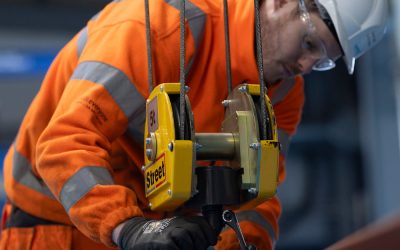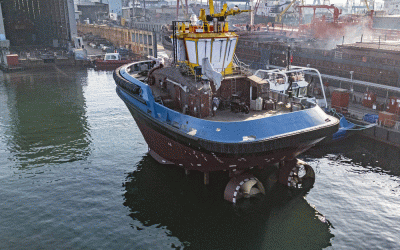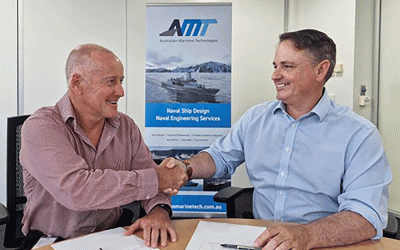At first glance, ballast tanks might not seem the most obvious fit for RIBs and powerboats, typically being the preserve of larger, ocean-going vessels. However, switch the ballast tank’s key role from guaranteeing hydrostatic stability to preventing slamming at high speeds, and its utilisation aboard smaller craft makes a lot more sense.
Excessive slamming and whole body vibration (WBV) remain perennial health hazards for crew on high-speed vessels, causing short- and long-term injuries that would surely cause a media outcry were they recorded in any land-based sector. Unfortunately, as highlighted in numerous previous issues of Ship & Boat International, much of the wear and tear endured by crew goes undetected until it’s too late, keeping this longstanding industry problem under the radar and making it difficult to pinpoint exactly when and how each injury occurred.
Identifying the problem is only half of the work; operators are keen to devise workable solutions to shield crew from violent impacts, most typically finding form in shock-mitigating seats and decking. It’s against this backdrop that UK firm Salmon Power Sports is promoting its modular SPS ballast system, developed as a compact but effective solution in the effort to tackle WBV. The SPS system incorporates a mini-ballast tank, designed to be fitted into a small compartment in the vessel’s bow, connected to a water scoop, situated at the vessel’s aft. Purely mechanical in nature, the system enables the cox to direct seawater into the bow tank when operating at high speeds, to neutralise slamming while maintaining the boat’s stability.
Managing director Joseph Salmon tells Ship & Boat International. “While onboard sensors are crucial for logging impacts and alerting the crew to slow down, the SPS system is designed to protect the crew from the impact occurring in the first place.” Crew can also use the system to adjust the longitudinal centre of gravity (LCG), for enhanced dynamic trim control.
Each tank for the SPS system is produced as a “semi-bespoke” unit, Salmon explains, adding: “The customer determines the size and the shape of the tank depending on how much space they have in the bow.” The system is compatible with boats ranging from approximately 7-24m in length, and its modular nature enables mission-specific customisation. For instance, “the RNLI opted to have the tank integrated into the hull structure of its Atlantic-class boats”, Salmon says. Customers can also pick their preferred materials for the construction of the tank, including marine-grade aluminium, or composites such as HDPE.
Concealed within its bow compartment, the tank doesn’t interfere with the coxswain’s line of sight, nor clutter up the deck, where space is at a premium, especially aboard a 7-10m RIB. “The only exterior element necessary for operation of the SPS system is seawater,” says Salmon. The system is also designed to be easy to open and clean – after transiting in silty waters, for example. “Maintenance of the scoop takes about 20 minutes, and is required only infrequently,” he says. “No specialist tools are required – only a spanner and Allen keys, which would be found in any toolbox; a rag and hose, to clean out the scoop; and a marine lubricant for reassembly.”
To activate the system, when transiting at more than 15knots, the cox moves the helm-based control lever into the ‘fill’ position, which opens the aft water scoop. As the boat speeds forward, seawater flows into the scoop and through the hull, and enters the bow tank. “The faster the boat is travelling, the faster the tank will fill,” says Salmon. Once the tank has been filled, the control lever is shifted to the ‘hold’ position, closing the scoop. With the water secured inside the tank, the heavier bow section keeps the front end of the boat flat on the sea surface and resists high vertical accelerations. To empty the tank, the cox simply shifts the lever to the ‘drain’ position, and the process is repeated as often as is required.
As simple as the SPS system seems, it’s backed by research. Sea trials took place aboard a 7.5m rescue boat, with and without the system activated. When the bow tank was filled, it was shown that the boat could reduce average impact levels by 50% and the most severe impact levels by 70%, compared to a ballast-free ride. “This is significant because it is these severe impacts which are by far the most likely to cause significant injury,” says Salmon. “The increasing severity of impacts is not a linear progression, meaning that an 8g impact is not simply twice as bad as a 4g impact: it is far worse.”
(For the full article, please see Ship & Boat International March/April 2022)



